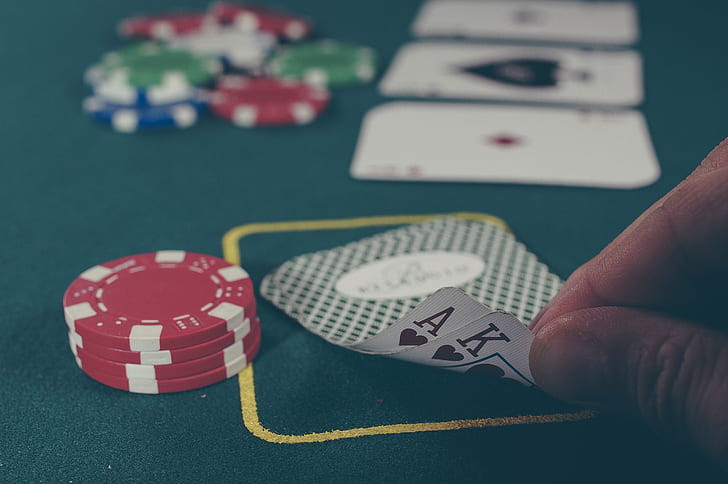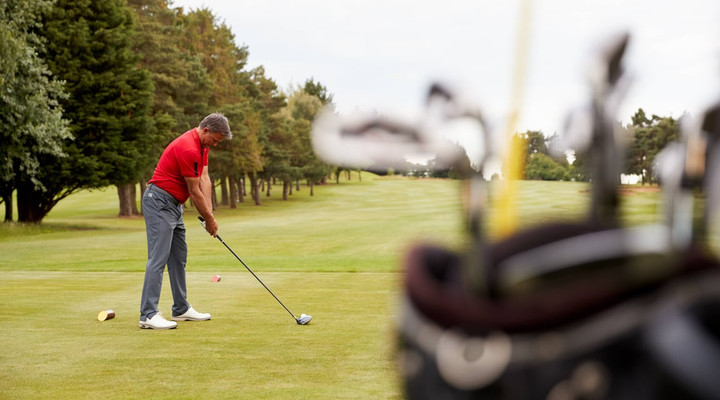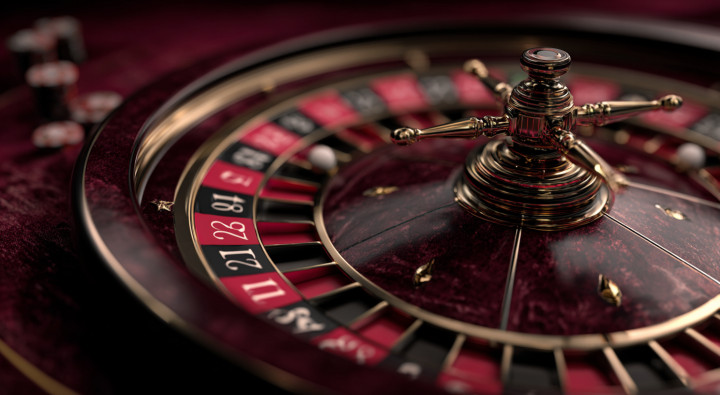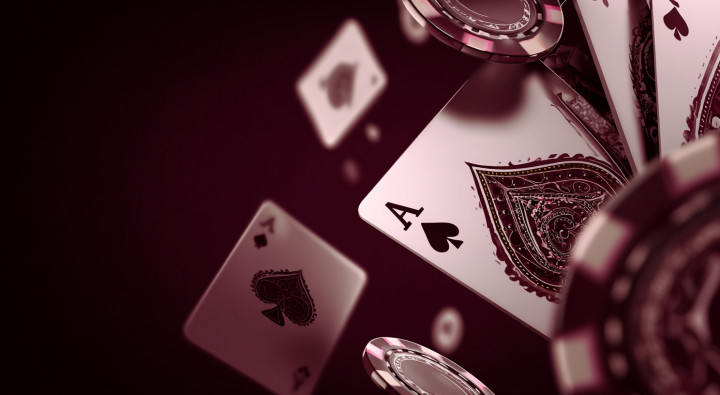How to play blackjack

Blackjack is a game that’s thought to have originated in the 17th century, as records show French casinos offering a game called vingt-et-un (translating to ‘21’) in that era. Others believe that it originated from the Romans, who played the game using wooden blocks.
Regardless of how it came to be, this game is one of the favourites at land-based and UK online casinos. You’ll be hard-pressed to find a casino that doesn’t offer it, or any of its variants. Our expert guide will explain the basic rules of the game and give the knowledge needed to play blackjack online for money with confidence.
WATCH:
Blackjack 101
The premise of this game is to get cards that total up to, or exactly, 21; without going over. You play against the dealer managing the game, instead of other players and will receive two cards to begin with.
The game uses one or more decks of cards and multiple players can participate in a game against the dealer.
Love a good game of 21? Try the best online blackjack casino today!
Essential terms to know
Before we discuss how to play this game further, we will review some important terms.
| Term | Definition |
| 21 | An alternative name for the game. |
| Bankroll | The monetary budget you have set aside to play this game. |
| Bust/Break | When your hand or the dealer’s hand is more than 21. |
| Buy-In | The amount you have to bet to start playing the game. |
| Chips | The round discs that denominate specific monetary value when you bet. |
| Face Cards | The royal cards like jack, queen and king. |
| Hand | The cards you have during the game. |
| Hard Hand/Hard Total | A hand where you have no ace, so the total is set in stone. |
| Heads Up | The name for this game if only one player goes up against the dealer. |
| Hole Card | The dealer’s card that will be face-down on the table. |
| House Edge | The amount of money a casino receives from the bets players place on the game. It’s expressed as a percentage. |
| Natural (Blackjack) | If the player’s first two cards are an ace and face card, it will immediately total 21, awarding them the winning the round. |
| Pair | When you receive two cards of the same value. |
| Pat Hand | If your first hand doesn’t require another card. Its value will usually be close to 21 (from 17 and up). |
| Push | This happens if the dealer and the player have hands of equal value. The player will receive back their full wager. |
| Soft Hand/Soft Total | A hand with an ace can have two possible values, depending on whether the ace acts as one or 11. |
| Stake | The amount you bet on the game. |
| Stiff | A hand total that equals between 12 and 16. It’s difficult to hit, as you might bust, but it might also not be high enough to win. |
| Surrender | You can get half your stake back by forfeiting the other half. |
| Upcard | The dealer’s card that’s face-up on the table, so that all players can see it. |
Understanding the blackjack rules
Now that you know the basic terms of this game, it’s time to look at the rules for playing blackjack.
The rules of blackjack
The rules of blackjack state that the dealer will deal each player two cards that are laid out face-up on the table. The dealer will get one face-up and one hole card. Players can then look at their cards and decide the actions they must take to get their hands value as close to 21 as possible.
Once they’ve completed any actions and bets, the dealer will turn around their hole card and players can then see if their hand is better than the dealer’s one.
The blackjack table layout
This game typically has a semi-circle table, with spots dedicated for a number of players. While the standard spots available are seven, some have as little as five, while others have as many as 12 spots. You and the other players will sit on the rounded side of the table while the dealer will stand behind the flat side of the table.
It is worth noting that, as a general rule of thumb, online live dealer blackjack also typically only allows a certain number of people per game.
Blackjack card values
The blackjack card values all have a value equal to the number on the card, with face cards equalling to 10. Ace is the only card with a fluid value between one and 11. So a three of hearts will be equal to a value of three, while a jack or king is equal to 10.
Player and dealer actions in blackjack
Once the game starts and all players have their cards (while the dealer has a face-up and hole card), the players starting from the left can:
- Hit: Ask the dealer for another card (‘come here’ hand motion). A player can do this as many times as they like, provided they don’t go bust.
- Stand: Keep your hand as is without adding another card (wave hand palm down over cards).
- Split play: If you get a pair, you can choose to split them into two hands, adding another bet and a card for each (add the same number of chips next to your original bet).
- Blackjack double down: Double your stake and receive another card that’s kept face-down until the end of the game (add the same number of chips next to your original bet).
Once the players have made all of their plays, the dealer will reveal their hand. If the hand total is less than 17, they must hit until it reaches 17 or more. If their hand total is 17 or more, they must stand and see who has the higher hand.
Special situations in blackjack
This game also has several special side bets you can place, although not all versions of the game will allow them. Side bets are wagers you place on the game itself, not on whether your hand will win. Side bets include:
- Blackjack insurance: A bet you can place if the dealer's face-up card is an ace. You will bet an amount equal to half of your initial stake, with hopes that the dealer will acquire a blackjack. It pays out two to one if you win, which means you double your money.
- 21+3: You bet that your two cards added to the dealer’s face-up card will be the winning hand.
Another situation that can happen is that all players bust before the dealer shows their hole card. This situation is called a ‘dead hand’ and the dealer simply shows their hole card before collecting all of the cards.
Different blackjack variants
There are several types of blackjack, but the two variants you should know about are:
- American (Classic): The traditional blackjack game we have explained so far; played with one, two, four, six, or eight decks.
- European: A variation typically played with two, six, or eight decks. Dealers don’t need to stand on 17 and players can’t ‘surrender’ if they believe they are going to lose.
Games masquerading as blackjack
Some games use the premise of blackjack, but they have so many differences that we can’t really call them blackjack. This is due to factors like the different decks or bets available, meaning the house edge is often higher. These are:
- Super Fun 21: A game that allows players to double down, split, or even surrender at any point in the game.
- Spanish 21: Uses six or eight 48-card decks without any 10’s. The dealer doesn’t have to stand on 17 and players can make a ‘match play’ (double their bet) if they think they have a chance to win.
- Free bet blackjack: In certain situations, players can double down or split pairs without having to double their bet.
- Blackjack switch: Players receive two hands and can switch the top cards of the hands if they work better with the other hand’s card.
How to play blackjack: a step-by-step guide from FIRST
We answer the question 'how do you play blackjack?' by providing a step-by-step guide:
- Register at a reliable casino.
- Make a deposit.
- Browse the different blackjack variants.
- Pick one that you want to try out.
- Choose the chip value for the bet you want to place.
- Click on the table layout on the screen to place your bet.
- Decide what action to take once you receive your cards.
- See whether your hand is closer to 21 than the dealer’s hand.
Blackjack etiquette in land-based and online casinos
There is a different etiquette when a player decides to play blackjack online vs at a land-based casino. Online blackjack games have less etiquette, as the software will manage the game fully. Most importantly, you have to remain respectful in the chat of online games with a live dealer. However, for land-based casinos, the following etiquette applies:
- You must change your money to chips before approaching the table.
- Place your chips or money (if it allows money bets) on the table.
- Don’t hand money or chips to the dealer.
- Don’t touch your chips once the cards are dealt.
- Don’t touch any face-up cards or the dealer’s cards.
- Use the appropriate signals for your actions; don’t say them.
- You can ask the dealer for advice.
- Remember to tip the dealer.
- Stack your chips with the highest value at the bottom.
- Remain respectful of the dealer and other players.
Basic blackjack strategy
Blackjack is one of the games that have set strategies you can use. We look at the basic strategy for blackjack below:
- Hit if the dealer’s face-up card is a seven or higher, while your hand totals between 12-16.
- Hit if your hand’s value is 11 or less.
- Stand if your hand’s value is 17 or more.
- Double down if your hand’s value is 10 or 11, while the dealer’s face-up card has a value of nine or less.
- Split aces and eights, but never split 10’s.
Card counting explained blackjack
Basically, with card counting you keep track of what cards have been played, because then you can make an educated guess as to which cards will be dealt.
Some experts use card counting when playing blackjack, although it’s only possible with land-based games - and not every time - casinos are strongly opposed to it and take measures to stop it, including using special card dealing machines.
You really need to understand how card counting works to master this technique.
Common mistakes to avoid while playing blackjack
There are some mistakes beginners make when playing this game, so you might want to take note to avoid making the same mistakes:
- Standing on a soft hand with a value of 18.
- Standing on a low hand if the dealer’s face-up card is seven to 10 or an ace.
- Taking insurance bets.
- Splitting 10’s.
FAQs
Below are some common FAQs that we have answered to ensure that you have all of the knowledge you need to play blackjack.
What is the main objective of blackjack?
The goal of this game is to get a hand value closer to 21 than the dealer’s hand.
How do I win at blackjack?
You win instantly if your hand is a natural blackjack or if you have a hand closer to 21 than the dealer.
What does it mean to ‘hit’ or ‘stand’ in blackjack?
To ‘hit’ is when you ask the dealer to give you another card, while to ‘stand’ is to keep your hand as it is.
What is ‘doubling down’ in blackjack and when should I do it?
When you have a hand equal to 10 or 11, with the dealer having a nine or lower face-up card, you double down. This is when you double your bet and receive a face-down card.
Can I use card counting in blackjack and is it legal?
You can, because card counting isn’t illegal. However, it is strongly discouraged by casino operators and, if they catch you doing it, you can be asked to leave.
What happens if my hand totals the same as the dealer’s hand in blackjack?
If this happens, you will receive your stake back, with no additional winnings.






 How to play slots
How to play slots
 How to play roulette
How to play roulette
 How to play poker
How to play poker
